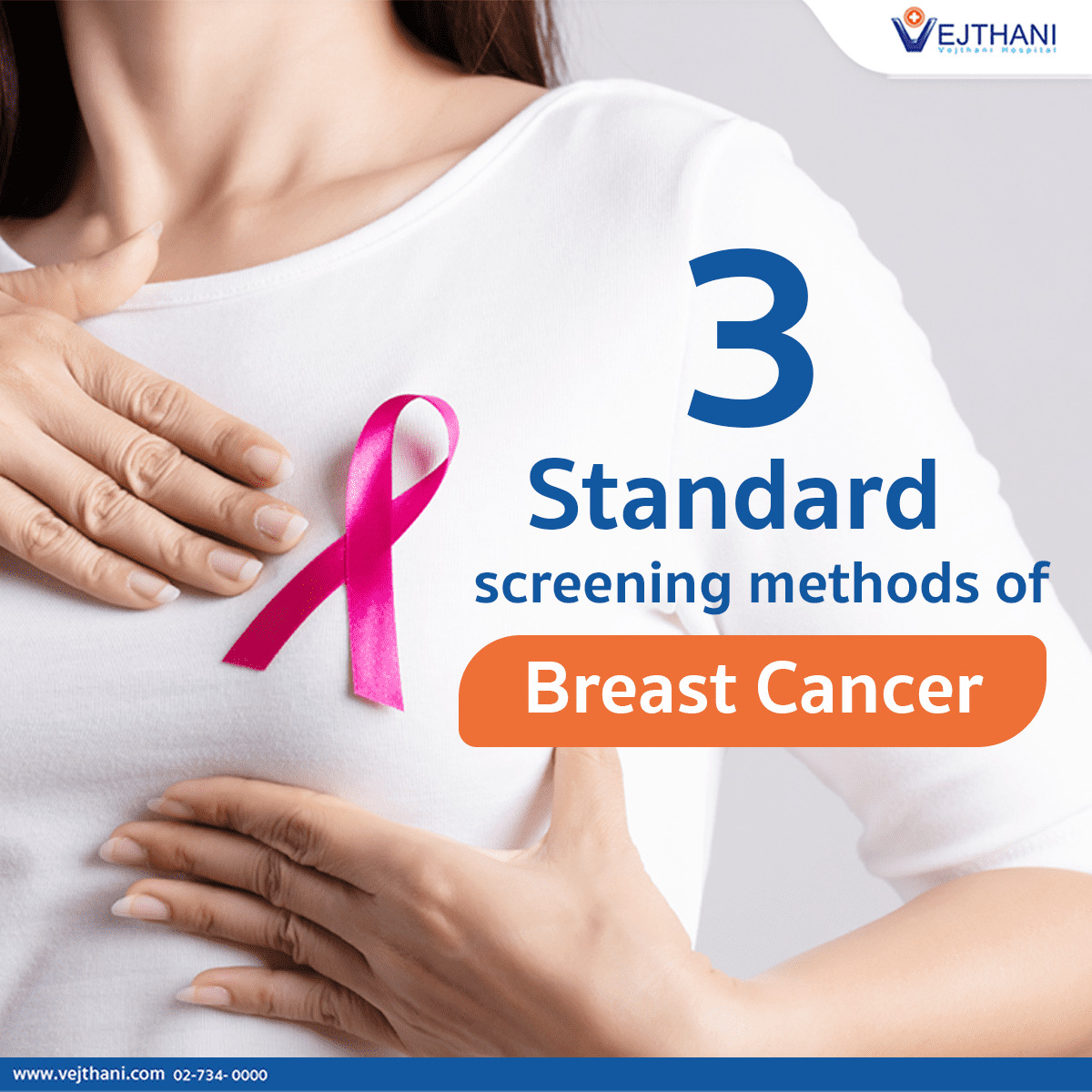August 6, 2024
3 Standard Methods of Breast Cancer Screening

October marks Breast Cancer Awareness Month. Breast cancer is the most prevalent type of cancer among Thai women, 28.6 people in 100,000 women are detected with the disease.
Due to its prevalence, breast cancer is among the cancer-related diseases that have the highest mortality rates. As early detection raises the chance of permanent cure, breast cancer screening is therefore an important tool to decrease the mortality rate.
The standard breast cancer screening consists of the three following steps:
- Patient’smedical historytaken by a doctor and breast examination by a breast surgeon: Women aged over 40 years old are recommended to undergo breast cancer screening once a year.
- Mammogram and ultrasound: Normally the test results are shown in BIRADS score (Breast Imaging Recording and Data system). The numbers range from 0–6.
- BIRADS 0 means the obtained information is not enough for diagnosis. Further tests are required.
- BIRADS 1 and 2 mean no risk of breast cancer is found. Patients are recommended to undergo a follow-up test once a year to look for possible symptoms.
- BIRADS 3 means a risk of breast cancer is found, but the possibility of developing the disease is less than 2%. Undergoing a follow-up test every 6 months is recommended.
- BIRADS 4 means a cancer risk is found with a 2–95% chance of cancer. Biopsy is recommended for confirmation.
- BIRADS 5 means a cancer risk is found with the chance of cancer over 95%. Biopsy is recommended for confirmation.
- BIRADS 6 means biopsy result shows the collected tissue is cancerous.
- Biopsy is an important process to diagnose and confirm breast cancer. This method is used when a patient has undergone a 3D mammogram as well as an ultrasound and the results show a BIRADS score higher than 4 or 5. There are three types of biopsies, as follows:
- Fine Needle Aspiration (FNA): A 22-gauge (hollow) needle is inserted into the lump and remove cells out of the suspected area to find cancer cells. An advantage of this method is that it takes only 1-2 minutes. It is suitable for those whose BIRADS score is 5 or has a higher risk of breast cancer. The test results should be interpreted by a cellular pathologist.
- Core Needle Biopsy: A bigger needle is directed into the suspected lump and cuts 3-4 pieces of tissues to test. This kind of biopsy gives a higher accuracy rate than cell observation as more detail of the cell structures and lesions can be seen. Core needle biopsy takes around 30 minutes, and an anesthetic injection will be given before the procedure.
- Vacuum Assist: A big needle is put into the lump. The needle will suck and cut tissues into a vacuum multiple times. The advantage is that the entire lump can be removed. However, the entire lump removal is applicable only when the doctor is confident that the lump is not cancerous. A local anesthesia will be given before needle insertion. The procedure takes around 40 minutes, depending on the lesions.
A proper breast cancer screening includes breast examination by a breast surgeon along with a mammogram and an ultrasound for more precise screening results.
If the test results come back with BIRADS score of 4 or 5, the patient should have biopsy done before surgery to plan an effective treatment, which should be most suitable for the disease and stage of the cancer.
For surgery, many patients are concerned that the entire breast needs to be removed. But actually, there is no need for the entire breast to be removed for some patients, especially those that have breast cancer in the initial stage whose tumor is small. Nowadays there is a breast-conserving technique surgery, but it requires the breast to have a similar structure and appearance as the other one. For a case that needs the entire breast to be removed, mastectomy is also available, but it preserves breast skin, the nipple and its surrounding skin. A breast reconstruction after mastectomy can be done to maintain a female identity and confidence
August 1, 2024
Breast Cancer: Symptoms, Risk Factors and Detection
July 25, 2024



Call Us
Hi! How can we help you?